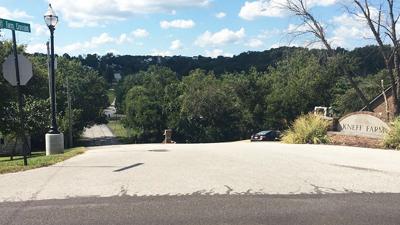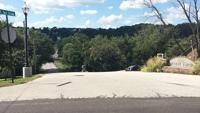By all accounts, Jefferson County’s program to take over maintenance of streets in some private subdivisions is going well.
“Even though the applications have slowed down recently, I think you can call it successful,” said Public Works Director Jason Jonas.
To date, the county has taken in 39.2 miles of roads covering 192 streets in 45 subdivisions all around the county.
“We’re on pace for 100 to 150 miles in five years, which is what the program was designed to sustain,” he said.
The County Council approved the program in spring 2018.
Thomas Meyer, a trustee with the Meramec Estates Residents Association, whose subdivision in Meramec Heights was accepted into the program on Sept. 23, said he’s happy with it as well.
“I think it’s a good program. When you look at it, it’s almost a no-brainer,” he said. “Some people who live in the subdivision don’t trust the government for anything, and they were asking what they’re up to, and they weren’t going to go for it, but it was a simple majority vote, and we got an overwhelming percentage of our people who said they’ll give it a try.
“I was impressed with the people in Hillsboro (at the Public Works Department) and Jason Jonas. They were very helpful. Our (Councilwoman Renee Reuter, District 2, Imperial) also was a big help in getting us in.”
Accepting streets into the county system is one thing, but now the hard part begins – actually taking on some significant maintenance projects.
“While Highway Department crews have been doing some work in the subdivisions – replacing signs, doing some patch-up work and some pavement replacement when we can fit it in – we are now looking at doing some remedial and preventive work.”
The County Council recently approved a pair of construction contracts for repairs on the newly accepted subdivision streets.
The first, for $250,000, went to E. Meier Contracting of Weldon Spring to replace concrete sections in the Capetown Village South subdivision in High Ridge and the Pine View Acres development in the west part of Imperial north of Otto.
The company submitted the lowest of three bids to replace 5,300 square yards of concrete.
“We got in there and found sections of deteriorating concrete,” Jonas said. “They will be replaced by section.”
Work is already underway and should be done by winter, he said.
The second contract, awarded to the only bidder, Parking Lot Maintenance of Lake St. Louis, is for $186,240 to repave some asphalt surfaces in 12 subdivisions and to fill in cracks that have opened up in concrete to make sure they don’t expand.
“You can see those cracks pretty easily,” Jonas said. “If they’re there long enough, weeds start growing up through them. You can take care of a lot of replacement costs down the road if you take care of the little problems now.”
Jonas said workers will clean out the cracks and fill them in and also replace the fiber board spacers between concrete sections.
The work by Parking Lot Maintenance was to begin this week and last though the fall, Jonas said.
The following subdivisions are due for work: Northwest Point and Pine View Acres in House Springs; Creekside and Whitehall Estates outside Arnold; Lake Estates at Crystal Highlands and La Bon Country Estates south of Festus; Estates of Castlegate, Parc at Kimmswick, Kneff Farm in Imperial; Fountains at Moss Hollow in Barnhart; Imperial Hills in Antonia; and Meramec Estates in the Meramec Heights area in west Imperial.
Jonas said the fact that the county is working to maintain the streets is evidence that it is not picking and choosing only the newest, best streets to take in.
“We’ve said all along that there are a number of things we look at, and the condition of the streets themselves is just one thing on the rating scale. There’s the thickness of the pavement, which is an indicator of how long it will last, the width of the pavement, and whether there are any safety hazards to consider, such as if there are guardrails on bridges.”
Other factors include the size of the subdivision, whether the subdivision is next to a county or state road and whether two subdivisions share entrances.
“We call those community standards,” Jonas said.
Once a representative of a subdivision applies for the program, the Public Works Department rates the subdivision according to those criteria.
Jonas has said that even if a subdivision’s streets aren’t accepted, it’s still worthy to apply because a report will indicate where improvements are needed.
“I can think of two or three subdivisions that didn’t get a high enough score that still have interest and are in the process of making improvements with the thought of applying again,” he said.
While Jonas said the number of applications has tailed off recently, his staff is still evaluating 65 subdivisions covering 26 miles of streets.
“When this is all done, we could have 100 to 150 miles of streets,” he said. “If it’s on the high side, it’s because they’re newer subdivisions, where we won’t have to do much for 10 years or so.




